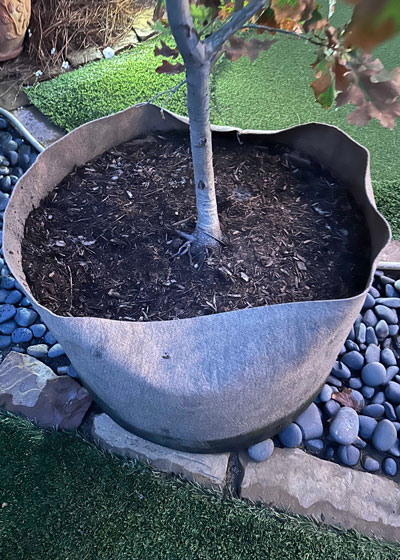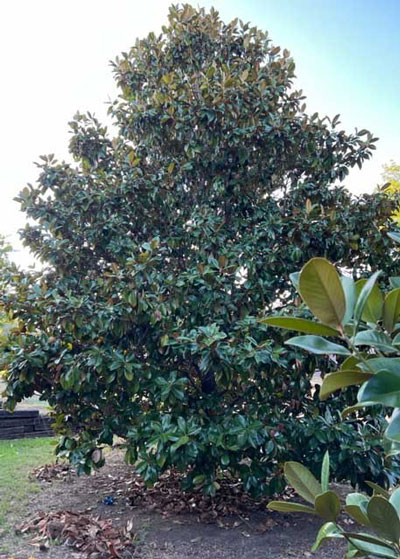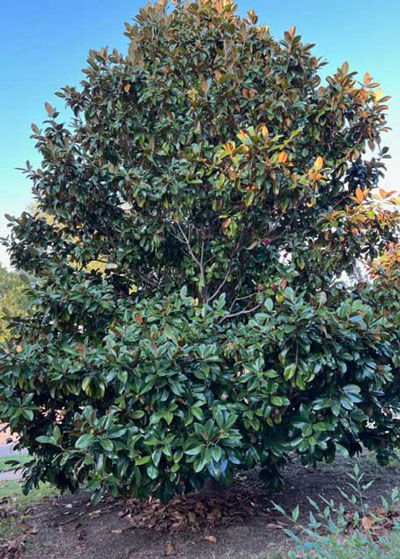Q&A – Ask Neil: October 19, 2023
(Please read these instructions carefully.)
Before you post your question, please look at recent issues to see if someone else has already asked it. You might find your answer there.
How to submit your question…
(Note: You may need to allow a pop-up window to come up in order to get the link for sending your photo(s). If you have already submitted your question and didn’t see the pop-up window, please click here.)
• Click the link provided below to post your question. After you submit your question, a new window will pop up giving you the address to which you can e-mail a SHARP, HIGH-RESOLUTION PHOTO to accompany your question. Please DO NOT SEND THUMBNAIL PHOTOS in case I need to zoom in to see things.
• Click here to post your question.
• Please ONLY POST YOUR QUESTION ONE TIME. We can only accept a set number of questions each week, and when we get duplicates it costs other people their chances.
• One question per reader, please.
• Please use this only for posting questions – not for standard emails.
• Watch for your answer in the following week’s e-gardens.
• I choose those of greatest general interest. For example, plant IDs seldom make the cut.
• I must have your first name or initials.
• I must have your city or county. (Texas is a very large state.)
QUESTION 1
HOW DO I DEAL WITH ROADSIDE ASTER?
Question: My bermuda was overtaken by roadside aster. I had a few last summer, and thousands this year. I applied a pre-emergent on time and sprayed weedkiller twice. I’m still finding large, healthy plants and new sprouts. What can I do? Sharon H., Eagle Mountain Lake.

Answer: The long-term answer is to step up the care you give your bermuda. You’ll notice that roadside aster will always show up in areas where it is most difficult to get water and fertilizer applied evenly. That’s usually farthest from the faucets, out by the curb, etc. Always hoping that I’m not hurting anyone’s feelings as I say it, I refer to it as a “weed of neglect.” When you ramp up your lawn care, roadside aster yields its dominance to your permanent lawngrass. The drought of the past two summers has given it a head start in your turf.
Next year feed your bermuda with an all-nitrogen fertilizer every two months mid-April through mid-October. If you see any of the wiry asters starting to grow during the early part of the summer, apply a broadleafed weedkiller containing 2,4-D to eliminate them while they’re still young. You should be able to beat it!
QUESTION 2
ANY SUGGESTIONS ON PLANTING MY OAK?
Question: I was gifted an 18-inch red oak after a dog passed away in 2019. It’s been in a pot since. It’s now 6 ft. tall in a 45-gallon smart pot, and I am planning to plant it this month. Do you have any suggestions? Jeremy N., Frisco.


Answer: This is a great time for planting trees. It gives them 6 or 8 months to establish new roots before next summer’s heat rolls into town. It looks like your oak suffered water stress during this summer’s drought, so it will appreciate being planted into the ground.
Set it at the same depth at which it’s growing in the pot. Use the excess soil you have left from digging the hole to create a donut-shaped berm that can retain water around the trunk when you irrigate. Stake the tree to keep it precisely vertical. Protect its trunk from sunscald by applying paper tree wrap from the ground up to the lowest branches for the first couple of years.
I hope your tree thrives for you. It doesn’t look like a Shumard red oak as judging by the leaf shape. Hopefully it will adapt to the Collin County soils and irrigation water (both highly alkaline).
QUESTION 3
MY SHASTA DAISIES ARE DYING OUT. WHAT SHOULD I DO?
Question: My Shasta daisies have done well with lush blooms for three years until this summer. They looked like they were going to flower, but had very few blooms, and then individual branches would die from the ground up. Only a few clumps remain now. I watered and fed them. What should I do? John B., Abilene.

Answer: Sadly, it sounds like it’s time to set out new plants come spring. I’d probably choose a different spot with different soil just to be sure I avoided any soil-borne diseases. Although they are definitely perennial plants, Shastas must be dug and divided every couple of years to keep the plantings thriving. Many of us have had experiences similar to yours – they are not long-lived perennials.
QUESTION 4
HOW OFTEN SHOULD I WATER NEW TREES?
Question: I know you have a specific method for watering new trees and shrubs their first year. I just don’t remember how often. Thanks. Carol V., McKinney.
Answer: I did not copy your question verbatim because your citation of my technique for watering was incorrect. Here is what I suggest for trees and shrubs in their first 2-3 years in the landscape:
• Use excess soil left over from digging the hole to create a donut-shaped “reservoir” around the plant.
• Buy a “water bubbler” (shown many times here in e-gardens) on the end of your hose to do the actual watering. It will allow you to turn the faucet up to full volume without washing the soil out of the planting site. If you can’t find a water bubbler, use a water breaker instead.
• Give each new plant an amount of water equal to the size of the container from which it was planted. A 2-gallon plant would receive 2 gallons of water. A 5-gallon plant would get 5 gallons. And so forth.
At 100F, repeat that every 2 days.
At 95F, repeat that every 3 days
At 90F, repeat every 4 days
At 80F, repeat as needed, probably weekly.
• Use your fingers and eyes. They get the final votes.
QUESTION 5
IS THIS A WINGED ELM, OR IS THIS TREE DISEASED?
Question: I have a volunteer tree growing in my mint bed. Is it a winged elm, or are the growths on the trunk and branches a disease? Is it a good tree to save in a larger area? Corinne S., Plano.


Answer: You do indeed have a winged elm (Ulmus alata), also known as cork elm and Wahoo. I grew up with one of these in our front yard when I was a kid in College Station. I don’t recall that we planted it. In fact, I don’t believe I’ve ever seen one sold in a nursery intentionally (could be confused by tree diggers with cedar elms). The prior owners of our house probably found it out in the woods and moved it into their yard. I spent 15 years tending the lawn and landscape around it.
I would rank winged elm as an “ok” landscape tree. It looks a good bit like a cedar elm, although the tree isn’t overall as attractive. The wings are fairly noticeable, especially during the winter. They never bothered me because I knew they were normal, but I certainly had to answer a ton of questions about them.
North Carolina State University (https://plants.ces.ncsu.edu/plants/ulmus-alata/) says it’s especially susceptible to Dutch elm disease, so if that dreaded disease ever comes into Texas, that would be a downer. Otherwise, I’m going to have to leave it to you to decide whether your tree is a keeper.
QUESTION 6
WILL BALL MOSS HURT TREES IN DFW?
Question: While in San Antonio I came across a fallen branch with ball moss attached. I brought it home to just north of DFW Airport and placed it in the crook of my live oak. Now I’m wondering if it will hurt the tree, or is it too cool this far north? Shannon R., Lewisville.

Answer: It’s too cold for ball moss and its sister Spanish moss to survive North Texas winters. Both are subtropical bromeliads (members of the same plant family as pineapples). However, for our readers in warmer parts of the state, don’t be tempted to do this, my friends. These epiphytes (not parasites) will shroud their support plants and shade them to death. If you want to grow them, put them on wire frames a long way from any living greenery.
QUESTION 7
COULD AN ARBORIST HELP US WITH THESE OVERGROWN MAGNOLIAS?
Question: We planted these two lovely southern magnolias 15 years ago. We misjudged how large they would get. They overwhelm the yard and are a pain to clean up after. Could an arborist shape them up a bit or re-home them? Or worst case, have them removed? Laura M., Garland.


Answer: They are definitely worth saving. Your photos are excellent, but due to the close-up nature of your photos, I can’t see how they might be overpowering their surroundings. You might hire a landscape designer to meet on site with you to explore any possibilities of redoing that part of your design so they could blend in. You might be able to remove lower branches to open things up visually. I say that, although you may be like I: preferring the limbs-to-the-ground look. At least consider having someone dig and relocate them to another landscape. Most of the value in a dug tree is in the labor to dig it, so don’t expect to get much monetarily for the trees, but at least you would know that you’ve saved them. Landscape contractors can do that. The real specialists in DFW are Fannin Tree Farms on TX121 (Rayburn Tollway) at Custer in Southeast Frisco. You might call them to see if they would have interest in getting involved. Good luck!
QUESTION 8
WHY DIDN’T YOU WARN US NOT TO PLANT RYE SEED IF WE HAVE USED PRE-EMERGENT WEEDKILLERS?
Question: In your October 5 list of things to do you recommended planting ryegrass seed, but you did not mention that we should not do it if we had already applied pre-emergent. This past week you did give that warning. I am so disappointed. Tracy F., Richardson.
Answer: And you have every right to be. Please accept my apologies. I’ve had a lot on my mind, and I just neglected to get it in. I’ll try to do better from here on out.
For what it’s worth, I did give warning on September 14, September 7, August 31 (major story) and August 24 (major warning). Those were all stories on applying pre-emergents, cautioning my readers not to use them if they intended to be planting ryegrass seed this fall.
